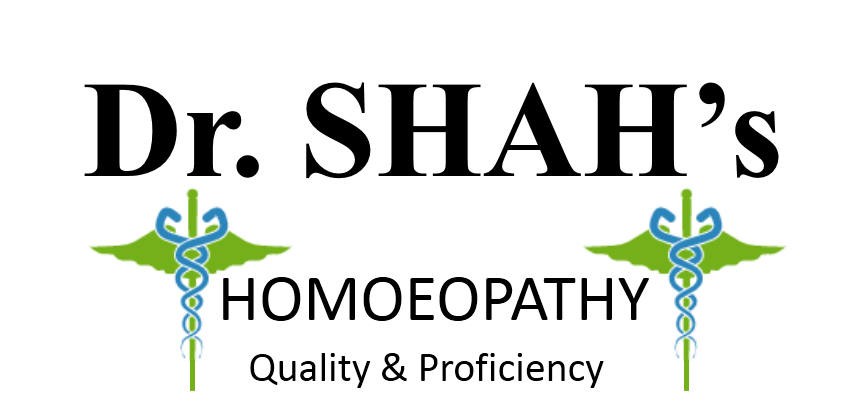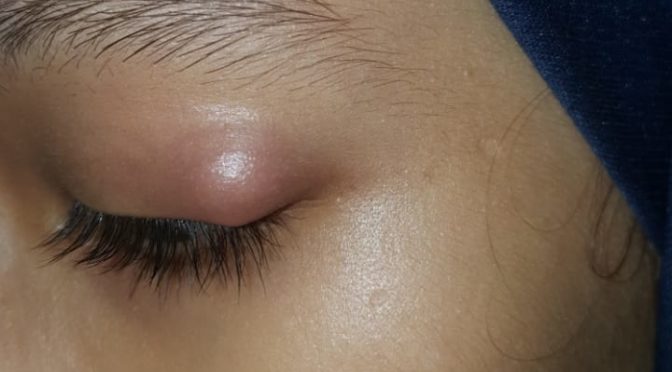LIFESTYLE DISEASES OR DISORDERS
Lifestyle Diseases and Role of Homeopathy.
Firstly let us understand what lifestyle means,
Lifestyle means a pattern of individual practices and personal behavioral choices or in a more simpler way we can describe lifestyle as “the way people live”, i.e day to day habits of an individual.
What Are Lifestyle Diseases or Disorders?
The diseases which primarily arises from the abnormal lifestyle of a person are grouped under the term lifestyle diseases or disorders.
Adopting an unhealthy lifestyle pattern leads to increase in both physical and mental diseases.
Lifestyle diseases too have become an epidemic and causes much greater public threat than any other epidemic.
It is seen that almost every 2nd individual suffer from some kind of lifestyle diseases.
Unfortunately, these lifestyle diseases are no longer restricted to people in their forties and fifties but has affecting the young adult zone and children as well.
Incidence And Causes Of Lifestyle Disorders
It is in practice that more than 30% of Indians over 30 years of age or even below 30 are suffering from one or more lifestyle diseases.
In our day to day life it is seen that, there are always deadlines, office or work pressure, family pressure, due dates and many other priorities. Thus due to this continous busy schedule and tension our mind and body are exhausted and we do not usually get the requied rest.
The risk of developing lifestyle disorder depends on various factors including the kind of work one does, the environment where the person lives, the type of food he consumes and various unavoidable stressful situations.
The World health organisation identifies following as major risk factors for developing lifestyle disorders.
- Improper Diet
- Stress
- Lack of Physical Activity
- Disturbed Biological Clock
- Alcoholism
- Smoking
IMPACT OF TECHNOLOGY ON HEALTH
Present or current scenario of technological advancements, globalisation, consumerism, substance abuse, disturbed family life, stress, competative working pattern have a severe impact on the health of an individual.
When we consider each of the lifestyle diseases in our daily practice we see a huge number of population are restricted to thier gadgets (cell phones, laptops, computers) and hence are always in their comfort zone. They are usually unaware about how harmful the use of technology is and how it is having a negative impact on their daily life. They are only aware of its adverse effects when their body starts showing the symptoms.
Let us see how some of the factors which are affecting health.
Prolonged use of laptops, cellphones, computers, continous watching of televison, may lead to spondylosis causing neck pain along with pain in the spine, trapezitis, tendinitis, trigger thumb, carpel tunnel syndrome, sciatica, strain on eyes, along with headache, fatigue, exhaustion, etc.
Prolong standing or wrong sitting posture gives strain on the backbone and causes chronic back pain. Also sitting for long induces continuous pressure on posterior aspect of thighs and hips which are largest muscle group of our body and almost centrally located this obliterates blood vessel on a very significant region of body thus disturbing the blood flow and circulatory pressure and pattern giving rise to engorged vessels in ano-rectal region and coccyxgodynia due to pressure on tissue and lack of circulation causing damage around coccyx. Not only this the circulatory disturbance of this scale due to pressure on significantly large part of body for prolonged period of time also gives rise to low tissue perfussion of blood in the dependent part that are compressed due to pressure in sitting posture, so then there is compensatory increase blood pressure to make sufficient tissue perfussion of blood where ever the blood vessels are compressed due to seated posture and mechanical pressure compression, this leads to high blood pressure.
Radiations generated by cellphones, and heat generated by laptop have adverse effect on the fertility.
People working against the biological clock, working continously on computers causing insomnia, and gastric disturbances.
Not to mention the addiction and psychological stress prosuced sue to social sites and unhealth mind again leads to unhealthy body.
SOME COMMON TYPES OF LIFESTYLE DISORDERS
It is usually seen that the onset of lifestyle disorders is insidious, it may take years to develop one.
But once these disorders are detected there has to be a total vigilance in the way of life along with proper medication and treatment for the same.
In present generation Stress tops the chart of causation of many diseases like obesity, diabetes, hypertension, cancers, etc.
Not that stress was never present in our ancestors in the past, but it was combated with stress busters like spending time with family and friends, excercising, meditation, etc., in present generation mankind had distanced self from all this stress busters and are more influenced by technology.
Few Common Lifestyle Disorders Are
INSULIN RESISTANCE and METABOLIC SYNDROME
Imbalance in energy utilisation and storage, as a result of disturbances in multiple physiological functioning, especially insulin resistance considered as a major contributing factor which results into metabolic syndrome which presents itself with collection of signs like Hyperglycemia, Central Obesity Hypertension, Dyslipidemia – High Triglycerides and Low HDL.
Lifestyle factors like Stress, disturbed chronobiology, improper diet, frequent consumption of sugar sweetened beverages, alcoholism substance abuse or psychotropic and certain other longterm medications, sedendary life, and definately genetics play major role in development of metabolic syndrome.
OBESITY
Indis has been ranked as second higest nation to have huge number of obese individuals. Obesity is a very fatal condition which makes an individual more vulnerable to lifestyle disorders. Obesity is one of the important disorder caused due to sedentary lifestyle, unhealthy eating habits, reduced physical activity, stressful life etc.
DIABETES MELLITUS
Diabetes mellitus is a metabolic disorder. It is a complex condition in which the blood sugar levels are raised for a long period of time either because of inadequacy of insulin production or lack of body cell responses to insulin. Diabetes is also a result of age, stress, sedentary lifestyle, obesity etc.
HYPERTENSION
Hypertension is a term used for a condition of body in which the blood pressure is higher than the normal. Its one of the common lifestyle disorder. Various causes related to hypertension mainly stress, sedentary lifestyle, increased salt intake.
Basically Hypertension in most of the cases is a compensatory mechanism of the body which is brought in place by body to counter reduced tissue perfussion of blood caused due to obesity lack of exercise and wrong postures where circulation is obliterated of a larger area due to pressure for long period like sitting in almost same posture for long or lying in almost same posture for long; Or in posture where dependent parts are not moved for longer period of time causing difficulty in circulation due gravity like standing for prolonged period or hanging limbs for prolonged period of time.
Salt restriction, regular excercise, proper diet, decrease stress help to manage hypertension.
CARDIOVASCULAR DISEASES
Any abnormality or irregularity which affects the heart muscles and blood vessel walls can be refered to as heart disease. Elevated level of cholestrol and triglycerides are major markers for heart diseases.
There is a huge number of population in India who suffer from cardiovascular diseases. Again it is one of the lifestyle disorder sedentary habits, stress, increased level of cholestrol, improper diet are some of the reasons for cardiovascular diseases.
CARCINOMAS
Due to stressfull lifestyle we lead, there is decrease in immunity of our body, WBC’s loose thier power to fight the viruses that enter our body. Ther may be an irregular cell growth which can be concluded as carcinoma when diagnosed appropriately.
RESPIRATORY DISEASES
In present practice we notice a huge number of population suffering from reccurent respiratory tract infections. It may be worsend due to continous influence to body to abnoxious agents, may be occupational harmful chemical exposures, prolong use of antihistamines anticold cough medicines, habit of smoking has a very severe impact on health which leads to various repiratory diseases.
AUTOIMMUNE COMPLAINTS
Due to sedentary lifetsyle, decreased physical activity, obesity and improper diet many other causes leads to various joint complaints like arthritis,rheumatoid arthitis, gout etc.
DEPRESSION and ANXIETY
Stress and anxiety trigger a number of lifestyle disorders. Continous worry stress, family tensions, work pressure, health concerns, unemployment, love failures have a direct impact on the mental or emotional health of the person. Continous stress worry leads to anxiety neurosis and depression.
Along with the above mentioned lifestyle disorders there are various other diseases which directly or indirectly have an impact on the health of an individual due to lifestyle.
ROLE OF HOMOEOPATHY IN LIFESTYLE DISEASES OR DISORDERS.
Homoeopathy plays a very significant role in the management of lifestyle disorders.
Lifestyle disorders are a threat to the socio economic aspect of nation globally and appropriate actions for their management are the need for the moment.
Management of lifestyle diseases include proper diagnosis and treatment for the same.
Homoeopathy has a major role to play in the management of present day lifestyle diseases.
Homoepathy medicines strengthens the immunity of the body to fight against pathogens. They act on much deeper level both at physical and emotional health.
Homeopathy is a complete system of medicine discovered by a German physician Dr Samuel Hahneman.
Dr Hahneman highlights the importance of healthy lifestyle. He advises to remove all influences which hinder cure.
According to him hinderances to the cure of chronic diseases are exccesive hardships, laboring, grief, hunger, poverty, sudden death of loved ones etc. He advised to avoid sedentary life that interferes with health.
In case of lifestyle disorders Homoepathic management include a detailed individualised study of the patient. A constitutional medicine is selected based on individualised approach. A holistic approach towards each case really helps to give wonderful results.
PREVENTION OF LIFESTYLE DISORDER
A healthy lifestyle should be adopted to combat life style disorders.
Health rests on three pillars
- DIET
- EXERCISE
- REST
If any one of above three is disturbed the health will fall
PROPER DIET
There is a well known proverb in ayurveda that says
” If your diet is not proper, no medicines will work
And
If your diet is proper then no medicines will be required.”
Diet rich in fiber and nutients, fresh fruits, vegetables should be a regular part of meal.
Avoid skipping meals.,junk food, fatty food, aerated drinks as they do no good but just harm the body in many ways.
ADEQUATE EXERCISE
Exercise helps improve circulation and secrete ample of anabolic hormones thus wash off metabolites and other harmful substances from body.
The root cause of most of the lifestyle disorders is obesity. It is really importamt to maintain a ideal body weight. Regular exercise, brisk walk, yoga help to comabat many diseases
REST TO MIND AND BODY
Stress Management
Proper hormone flow depends much on balanced mind as its optimal balance is dependent on a very delicate Hypothalamo-Pitutary-Hormonal Axis. Which is much dependent on psychological wellbeing and vice-a-versa.
Proper guidance and counselling to combat stress. Involve in recreational activities which help to relieve stress. Practice yoga, music therapy, maintain a balance between work and family., proper balanced food with adequate sleep.
Adequate Sleep
Most of the hormones and other repair mediators within body are secreted most abaundantly during and deeper the sleep better the repair work in body.
Continous and undisturbed sleep of 7 to 8 hours helps to solve many health issues.




